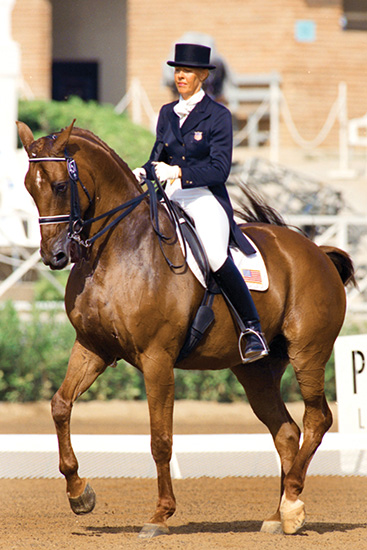 Photos by Ilse Schwarz and Jacob Melissen
Photos by Ilse Schwarz and Jacob Melissen
The dressage world is relieved to learn that Charlotte Bredahl is recovering after a serious operation on her brain (for details see Kenneth Braddick’s report)
If you would like to learn more about Charlotte, here is an interview with her from back in 2015… we all wish her well on her road to recovery.
The Danish born, American dressage rider, trainer and judge, Charlotte Bredahl was a recent visitor to Australia, judging the Grand Prix that was held in conjunction with the Melbourne Three Day Event. Charlotte has recently been appointed to help the American Young Dressage rider squad. I was lucky enough to spend a little time talking with her…
I understand you have a very interesting Young Dressage Rider program in the United States?
“I was just appointed US Assistant Youth Coach in the Fall. This is a very new position for me – along with George Williams, he is the Youth Coach. Originally it was supposed to be a one person position, but George and I both put on our applications that we would prefer to have an East Coast and a West Coast coach. So they ended up hiring both of us. We were very happy about that because like you, we have such a big country that it is impossible for one person to cover it, even for two it is going to be a challenge.”
“The clinics I have been running have a different formula from the regular clinics. They are sort of competition clinics – this is for the riders that are already quite experienced and competing. They ride a test for me – since I am a judge – and then we would discuss everything and then we work on everything and try to improve. And in each lesson, all the other riders in the clinic are all involved, and I discuss the lesson with them, and ask them questions, so they are involved the entire day. At the end of the day, we go back and look at the test on video, so that the riders themselves can look at the rides and be part of the discussion. It is a very interactive format involving all the riders. Of course we keep it in a very positive and light so they are not afraid to discuss things without ever being really critical of each other.”
story continues below the advertisement
“These clinics are for eight to ten riders, otherwise you end up with a very long day when you do videos at the end. I think the riders really like the format because they get something out of every single lesson, not just their own. They also like that I made them judge too, I would ask them to judge part of their own ride. It was interesting when they did, they would give lower scores than I would give them, which was good, but it really made them think. It also made them bond more, because they were constantly interacting with each other. I thought that was really helpful. We had our meals together, we would be having discussions at lunch and even at dinner time. I would have the parents off doing their own thing…”
“I really enjoyed the format and the kids seemed to enjoy it, and the trainers appreciated it a lot because it gave a different input from what they give. Some of the trainers would come to the whole clinic, some would just come for a short time. I asked the trainers how can I be the most useful to you and your students? They all said the same thing, that this particular format they really appreciated because it gave the different input that they weren’t giving the riders themselves – because of my judging background.”
Charlotte and Jan Ebeling – their ‘Grease’ pas de deux at the World Cup Final in Las Vegas
How did you become involved in Dressage?
“It’s a long story. I grew up in Denmark and I was obsessed with horses from as far back as I can remember. I started working at a barn when I was like nine years old – I would clean stalls in exchange for lessons. My parents didn’t have any money for lessons, so I was on my own, which was fine. When I was twelve, we moved to a small island because my dad got the job of sheriff there. They had mostly work horses, and driving horses. I started knocking on doors and asking the farmers if I could ride their horses. I started riding on my own. Very few lessons. Every once in a while, somebody would take pity on me and they would pay for a lesson, but mostly I learned just from the horses. I got a job after school working with Trotters and I got a license to drive on the track at Copenhagen. It taught me a lot about long lining and that have come in as a really nice tool for me with piaffe and passage. Because I used to break all the babies to the cart, I did so much long lining that I was really comfortable with the process.”
story continues below the advertisement
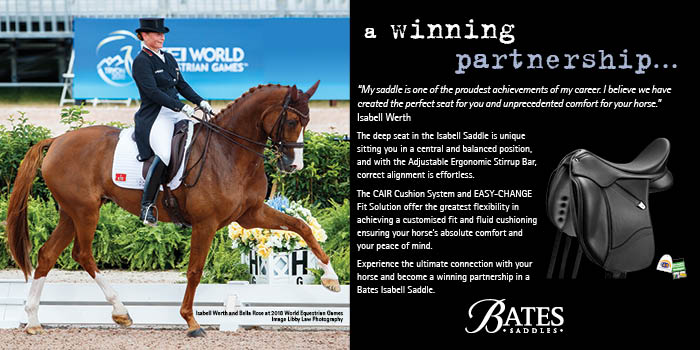
“When I was about nineteen I ended up in California. My main reason for wanting to move out of Denmark was the weather, I didn’t like the cold. I started working at Bell Canyon Equestrian Centre, at the time a very fancy equestrian centre just outside of Los Angeles. It was where all the US team clinics took place. I knocked on the door, got a job as a groom. They said, we’ll hire you but we can’t pay you. I said okay and started working my way up. Pretty soon they started paying me. I worked very hard as a groom, then they discovered that I could ride. Even though I wasn’t that good, at the time the standard in the States was very low for dressage, and I had been brought up with dressage riding in Denmark, and Denmark was ahead of the States at that time.”
“Once they realized I could ride, I started riding up to ten horses a day and worked my way up, and about three years later, I was running the place! There were 110 horses at the facility, and I had to put on a dressage show once a month, a two arena show every month. During that time I didn’t get to ride much because there was so much to do, I was like twenty three years old. Then I quit as a manager because I really wanted to ride but I stayed on as trainer.”
“Then I started importing horses from Denmark as a side business. The first horse I brought over, Copenhagen, was in a partnership, I didn’t pay for the horse and I had nothing to do with selecting him, and that first horse was not much of a mover but it had a very good temperament. One of my clients bought him because he had such a good temperament and then after six months she got pregnant, so I ended up with this horse in training for four years, and he ended up being my first Grand Prix horse. I was never in training, but Hilda Gurney helped me, but I didn’t own a trailer at the time, so it was when someone felt sorry for me, and they would take me along with them to their lesson, so it was like once a month that I would have a lesson.”
“He became my first Grand Prix horse and at the time the standard was not so high so I did okay but the horse was definitely limited, he just had a wonderful mind, and he ended up teaching four kids to ride later, so he turned out a good investment for the owner and me.”
story continues below the advertisement
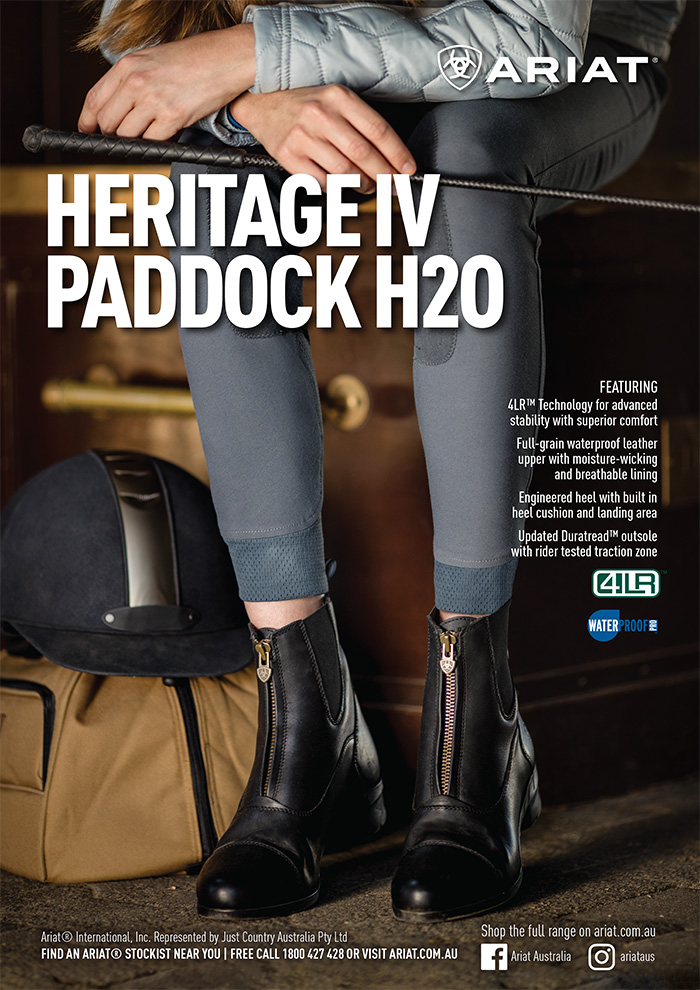
“At the same time, I imported another horse. A gangly five year old chestnut, and he turned out to be fairly difficult. People tried him and nobody liked him, nobody ever made an offer on this horse, so I went to my partner and said if I pay for everything can I keep him through the 92 Olympics. He said okay. That’s Monsieur, and he ended up becoming my Olympic horse – I still have him and he is 35 years old now. He’s still hopping. Of course the deal was that he was going to be sold after the Olympics, but even after the Olympics, where we won a team bronze, no-one else could ride him, so he never sold.”
Charlotte and Monsieur at the Games
“I made those two, and at the same time I did another partnership and he became my third Grand Prix horse, Lugano. At Intermediaire I, no horse ever beat him in the US. He was Horse of the Year at I2, and I made the team for the North American Championship on him in 1997 and he was the highest scoring American horse there. A very talented horse but unfortunately he only lasted two years at Grand Prix and then he had some soundness issues. He could still compete at a lower level but he couldn’t do the really hard movements any more.”
“Since then I have had other horses that have trained up to Grand Prix but they didn’t show at Grand Prix, one was Windfall, a stallion I bought in Demark. He was horse of the year at I1, did everything in the Grand Prix but basically was too lazy to be a good Grand Prix horse, that was not something he wanted to do.”
“Nowadays I think of myself as a trainer / rider / judge but my passion is in the training of both horses and riders. I’m not passionate about competing any more because I have done it for so long, but I still love the training process and I still love making a horse. I have a horse right now, Chanel, I got her when she was five, at a good price because she was very hot. She is now really coming into her own – I rode her in a Pas de Deux at the World Cup final in Las Vegas as part of the entertainment. It was basically a Grand Prix Pas de Deux, and she is turning out to be better than I expected. I don’t know if I will compete her, we are just taking it one month at a time. I haven’t decided, it could go either way, but I love the process of training them up, and I absolutely love coaching the youngsters. I am not so passionate about judging, I like it, but I am not passionate about it.”
Do you think we’ve seen a change in the judging over the past couple of years with the emergence of a more sympathetic style of dressage…
“Yes and I love that. I have to say I am very proud of the American style of riding because I want to be a sympathetic rider, and I really love horses, and I hate to see when it is not going in that direction. I am thrilled to see that we have some excellent role models at the moment. I have always been a big admirer of Carl for years and years, way before he became what he is now. He was also at the 92 Olympics and we became very good friends. He is a wonderful person and an amazing horseman, and he treats his horses with such respect. I’ve seen him make horse after horse after horse – very normal horses he has made into stars. I’m very happy for him and for the sport because he is an excellent role model.”
“But I also feel that way about Steffen, I have seen him make horses, and I have watched him train for many years, and I have never seen him be anything other than super respectful to his horses. They get turned out, the way they are treated is really good. I am thrilled to see that we have Laura Graves coming along, again it is a very harmonious picture, the horse is in self-carriage, not pulled together, it is nice to see. In my young riders, I have been happy to see that they are also riding with that style: respect for the horses and very harmonious riding. They still have a a lot to learn as far as being effective but the overall philosophy is really good, and I am excited to be working with that.”



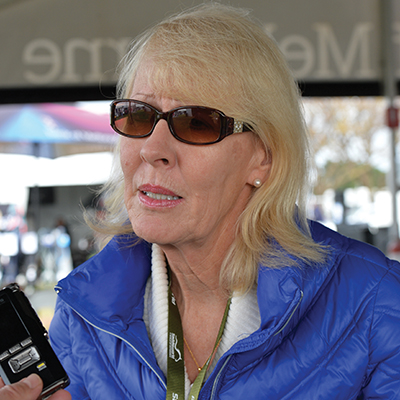
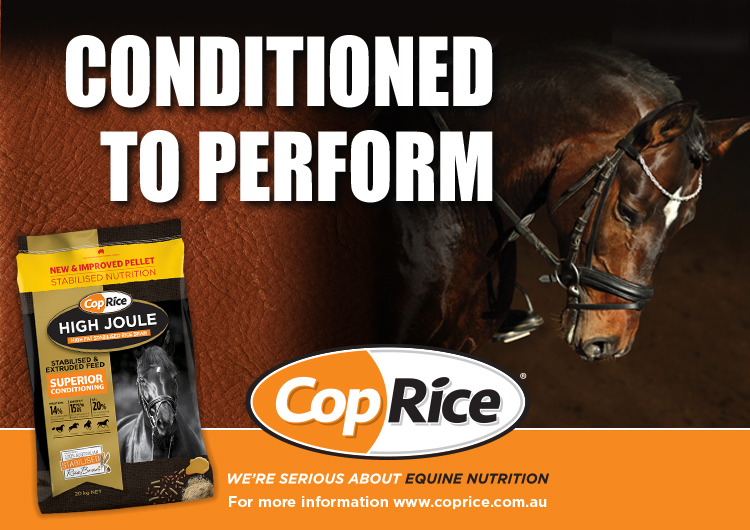
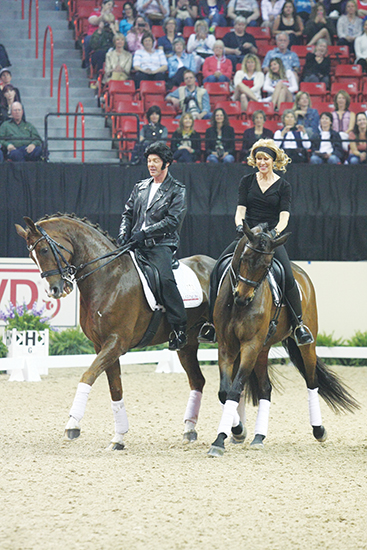
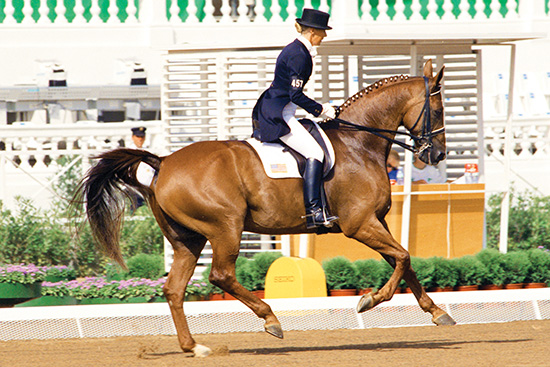
Love Charlotte, it’s a treat to have her on the west coast. Also echo her thoughts on US dressage. Our dressage program is one of the few bright spots in the US in the past few years.